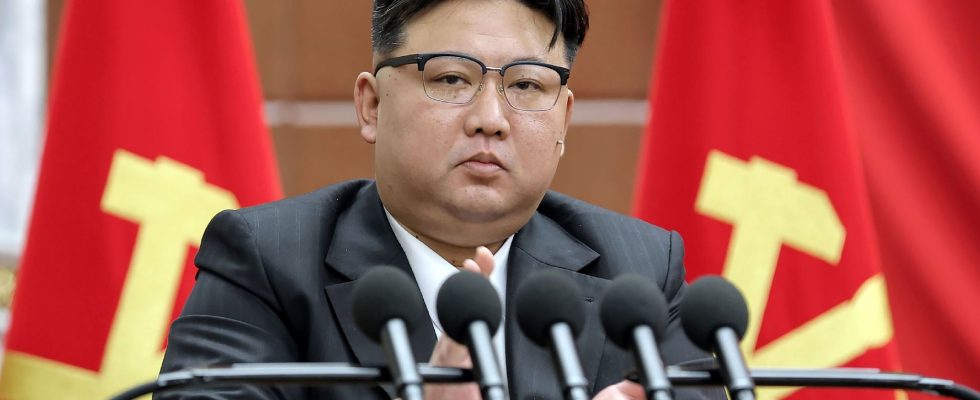Tensions are still rising at the start of the year on the Korean peninsula. Pyongyang announced, Friday January 19, that it had tested an “undersea nuclear weapons system” in response to joint naval exercises carried out by Washington, Seoul and Tokyo, against a backdrop of concerns around a hardening of the position of the North Korea.
These trilateral exercises, involving a nuclear-powered American aircraft carrier, “seriously threatened the security” of the North, the North Korean Defense Ministry said in a statement cited by state agency KCNA.
In response, Pyongyang carried out “a major test of its underwater nuclear weapons system Haeil-5-23 developing in the East Sea of Korea,” the ministry added, referring to an area also known as the Sea of Japan.
Military maneuvers
Earlier this week, South Korea, the United States and Japan conducted joint naval military drills south of the southern South Korean island of Jeju, saying they did so in response to a missile launch ballistic by Pyongyang on Sunday. The exercises involved nine ships from the three countries, including the US nuclear-powered aircraft carrier USS Carl Vinson.
These maneuvers “constituted a cause of further destabilization of the regional situation”, Pyongyang declared Friday, calling them a “serious threat to the security” of the North, added the ministry spokesperson, according to KCNA.
The test announced Friday – the exact date of which was not specified – allows “the underwater counter-attack system based on the nuclear weapons of our army to be further strengthened”, highlighted the spokesperson , affirming that Pyongyang’s various maritime and submarine responses would “continue to deter hostile military maneuvers by the United States navies and its allies.”
Recent months have seen a sharp deterioration in long-tense relations between the two Koreas, with both sides abandoning key agreements aimed at reducing tensions, strengthening border security and conducting live-fire exercises along the border.
North Korean leader Kim Jong Un recently described the South as the “main enemy” and threatened Seoul with war for any violation of “even 0.001 mm” of North Korean territory.
Drones deployed?
Last year, Pyongyang claimed to have conducted several tests of a so-called underwater nuclear attack drone – a different version of Haeil, which means tsunami in Korean, saying the weapon could trigger “a radioactive tsunami”.
Friday’s announcement of the submarine test “is a clear sign of the deployment of Haeil drones in naval fleets for their use,” said Hong Min, an analyst at the Korea Institute for National Unification in Seoul. “The North’s statement illustrates Pyongyang’s position that it will respond proportionately to the military exercises of the South, Japan and the United States,” he noted, adding that the North did not appear to be trying to “cross the line in order to provoke armed conflict.
Ahn Chan-il, a defector-turned-researcher who heads the Global Institute for North Korea Studies, said it was “difficult to determine the exact capabilities” of North Korea’s alleged underwater nuclear weapons systems. “Given North Korea’s scientific level of defense and the fact that the weapon is still in the development stage, it is not yet capable of posing a significant threat,” he said. to the AFP.
At the end of 2023, Kim Jong Un launched new threats of nuclear strikes against Seoul and ordered the acceleration of military preparations for a “war” which “can be launched at any time on the peninsula. Pyongyang has announced that it had fired a ballistic missile equipped with a maneuverable hypersonic warhead on Sunday, a few days after conducting live ammunition artillery exercises on its western coast, near South Korean islands whose civilian population was called to sheltered.
After two successive failures in May and June, North Korea successfully put its first military observation satellite into orbit in November, after having received, according to Seoul, Russian aid, in exchange for weapons for the war in Ukraine.
